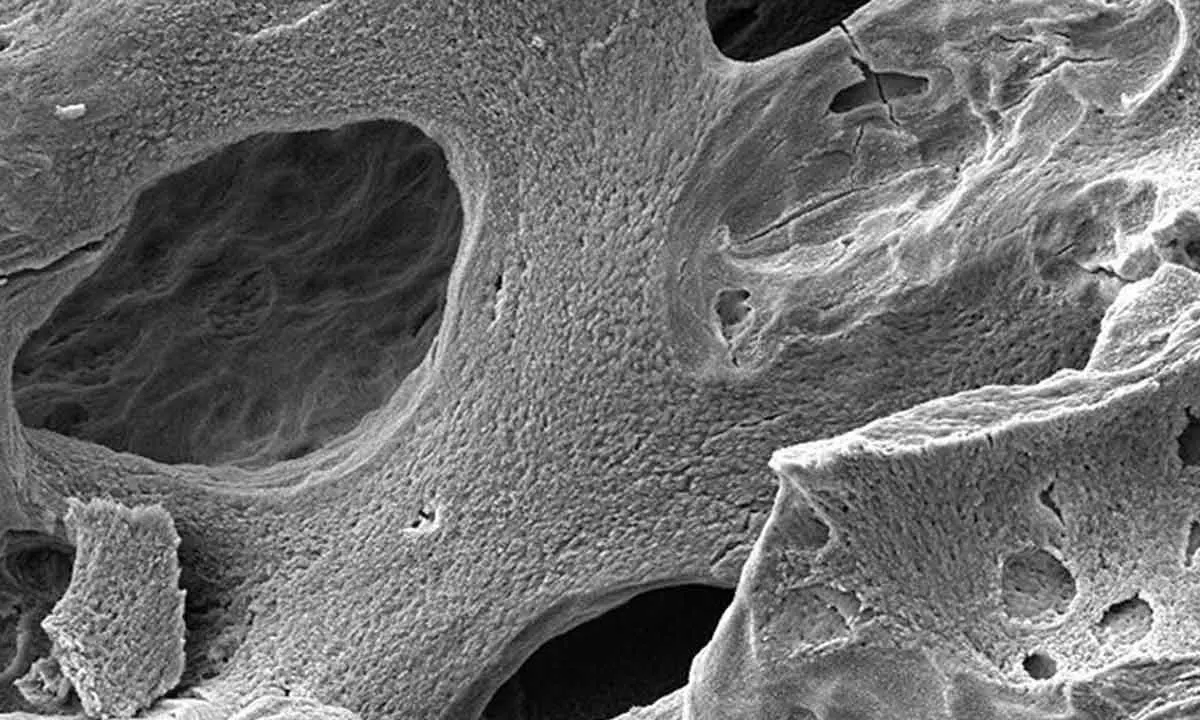Study Reveals Astronauts Losing Bone Density For Every Month Spent In Space

SEM image of osteoporosis. (Science Photo Library - Steve Gschmeissner)
- Researchers stated on Thursday that astronauts lose decades' worth of bone mass in space, and many may not recover even after returning to Earth for a year.
- Astronauts lose between 1% and 2% of their bone density for each month they spend in space since there is no gravity to exert pressure on their legs while standing and walking.
Researchers stated on Thursday that astronauts lose decades' worth of bone mass in space, and many may not recover even after returning to Earth for a year. They warned that this could be a "major problem" for trips to Mars in the future. According to earlier studies, astronauts lose between 1% and 2% of their bone density for each month they spend in space since there is no gravity to exert pressure on their legs while standing and walking.
A recent study examined the wrists and ankles of 17 astronauts before, during, and following a stay on the International Space Station to see how astronauts recuperate once their feet are back on the ground.
As per research co-author and head of the McCaig Institute for Bone and Joint Health, Steven Boyd of Canada's University of Calgary, the amount of bone density lost by astronauts was similar to how much they would lose if they were returned on Earth across several decades.
The scientists discovered that nine of the astronauts' shinbone density had not completely recovered after a year on Earth and that they were still missing around ten years' worth of bone mass. The astronauts who spent the longest periods of time on the ISS—four to seven months—recovered the least quickly.
For proposed future missions to Mars, where men may spend years in space, Boyd said it is a "huge concern. Boyd claimed that studies on astronauts who spent at least a year aboard the ISS may provide some of the answers.
Based on a 2020 modelling research, 33 percent of astronauts on a three-year mission to Mars would be at risk for osteoporosis.
Meanwhile, the new research, which was presented also demonstrated how space travel changes the actual structure of bones. Boyd claimed that if you compared a person's bones to those of the Eiffel Tower, it would appear as though some of the connecting metal rods holding the building up were missing.
The study discovered that some workouts are superior than others for maintaining bone mass. It concluded that deadlifting was much more efficient than either jogging or cycling and recommended more challenging lower-body activities in the future.
Boyd noted that osteoporosis, the astronauts' equivalent on Earth, is termed as "the silent disease," and that the astronauts, who are typically in good physical shape and in their 40s, did not typically notice or observe the severe bone loss.
Next Story


















